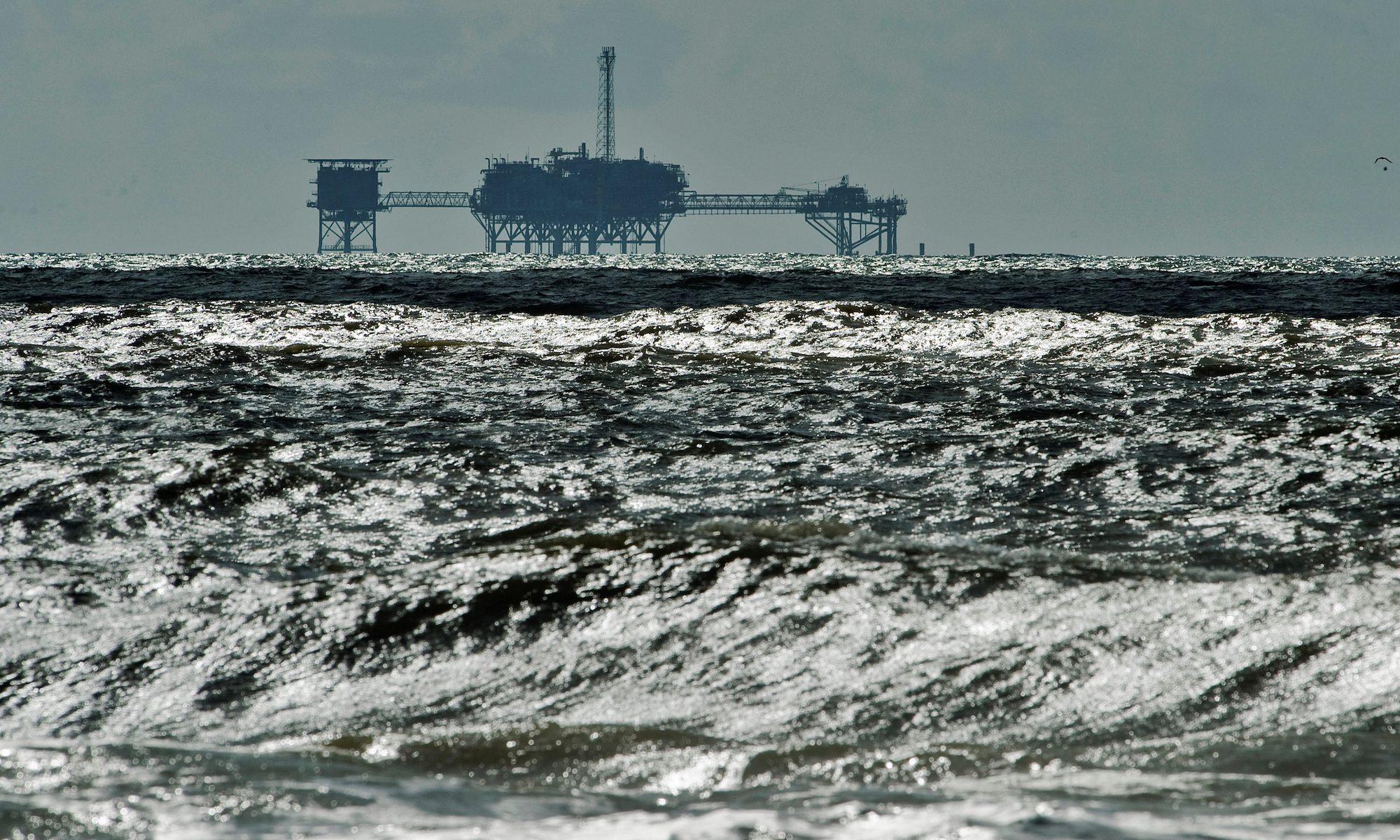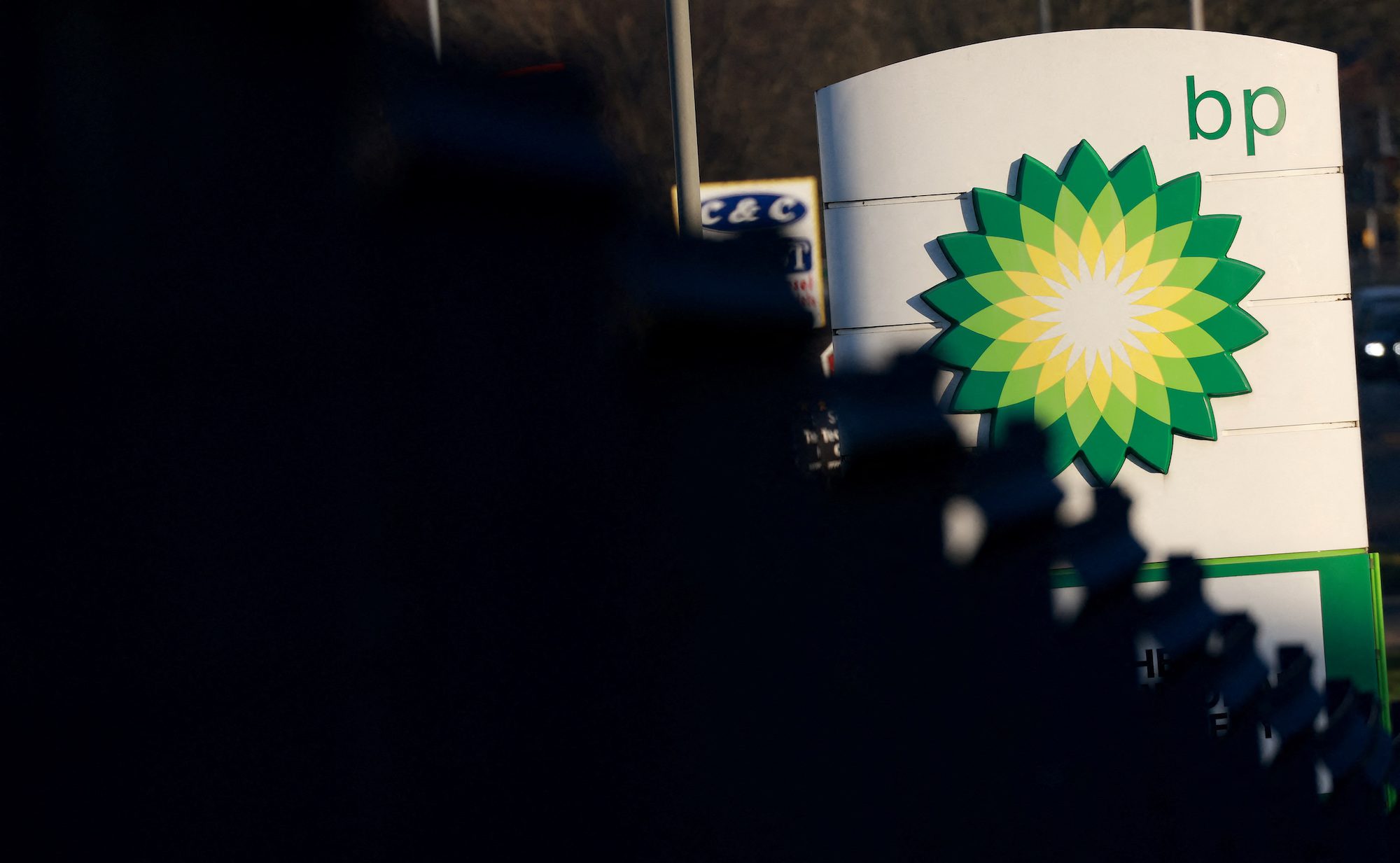The Gulf Oil Spill as observed from NASA’s Terra satellite on May 24, 2010. Image credit: NASA/Wikimedia Commons
Margaret Cronin Fisk and Allen Johnson Jr.
Oct. 7 (Bloomberg) — BP Plc’s doomed Macondo well dumped 4.2 million barrels of oil into the Gulf of Mexico in 2010, a lawyer for the U.S. told a judge who is assessing the size of the spill and how well the company reacted to the disaster.
The U.S. contends 5 million barrels of oil were released from the well, while agreeing with BP that 810,000 barrels were captured by a siphoning device at the wellhead before they could spill into the sea.
“The question for you, your honor, is not how much oil was collected but how much was not,” Steven O’Rourke, a lawyer for the Justice Department, told U.S. District Judge Carl Barbier in New Orleans today in the second phase of the trial over the largest offshore oil spill in U.S. history.
Barbier is already weighing whether the London-based company’s actions in causing the April 20, 2010, blowout and subsequent spill reached the level of gross negligence, which would lead to higher fines and punitive damages. His decision on the size of the spill may mean billions of dollars to BP.
The blowout of the Macondo well off the coast of Louisiana killed 11 people aboard the Deepwater Horizon drilling rig. The accident sparked hundreds of lawsuits against BP, as well as Transocean Ltd., owner of the rig that burned and sank, and Halliburton Co., which provided cement services for the project.
$18 Billion Maximum
The judge’s endorsement of the U.S. spill estimate could trigger a maximum fine of $18 billion under the Clean Water Act if he finds gross negligence. A finding affirming BP’s assessment that the spill was 40 percent smaller than the government says might shave as much as $7.5 billion from the maximum payment.
The “quantity of the oil released” may also help determine how much BP will have to pay for natural-resource damage claims, Justice Department lawyers said in a Sept. 5 filing. Under U.S. law, BP faces unspecified billions of dollars in additional expenses to restore the Gulf Coast environment.
The defense estimates are “substantially lower” than those by the government witnesses, O’Rourke told Barbier today. “And the question for you, judge, is why is there such a difference?”
First, BP’s experts are “disavowing” information that the company provided to the government during the oil spill response, O’Rourke said. Second, BP experts theorize that the flow rates didn’t increase until weeks after the incident began, he said.
‘Not Valid’
“The evidence will show that those theories are not valid,” O’Rourke said.
BP has countered that the U.S. assessment is flawed and the government hasn’t used the most accurate data. BP estimates 2.45 million barrels spilled into the Gulf before the well was capped.
“BP will present information and opinions based on known data,” Mike Brock, a lawyer for the company, said in his opening statement at trial today. “Known data before the spill and known data after the spill.”
The BP lawyer suggested the government’s estimate was politically motivated: “It was designed to be quick and dirty for government purposes — but not good science,” Brock said.
BP’s environmental fines would come on top of a partial settlement reached last year with some private-party plaintiffs, initially valued at $7.8 billion. The company this year increased the accord’s estimated cost to $9.6 billion or more, based what it considers a faulty interpretation of claims by the administrator of the settlement.
Dispute Returned
BP won reconsideration of the interpretation Oct. 4, when the U.S. appeals court sent the dispute back to Barbier.
BP has taken a charge of $42 billion related to the spill, according to its earnings statement released in July. The company has spent more than $26 billion including cleanup and claims, BP said on its website.
The first phase of the trial, which started in February, addressed actions by BP, Transocean and Halliburton leading to the explosion in the Macondo well and the sinking of the Deepwater Horizon.
The second phase, which began Sept. 30, is split into two parts, with last week’s considering allegations that BP’s failings caused the spill to last longer. The next part, which began today and is scheduled to last three weeks, will determine how much oil was spilled into the Gulf of Mexico.
Gross Negligence
If the company is found by Barbier to have acted with gross negligence in causing the explosion or extending the spill, it faces a penalty of as much as $18 billion, using the government estimate, and a maximum of $10.5 billion, using the BP assessment. The maximum fines if Barbier rejects gross negligence would be $2.7 billion under the BP assessment and $4.6 billion using the government numbers.
Under the U.S. Clean Water Act, polluters face penalties of a maximum of $1,100 per barrel spilled, unless they’re found to have acted in a grossly negligent or reckless manner in causing the spill. The maximum penalty with a finding of gross negligence is $4,300 per barrel. A judge will determine the fines, using multiple factors including BP’s attempts to mitigate the event.
The Macondo well was releasing 53,000 barrels a day at the end of the spill, the U.S. contends.
Using company data and information and basic engineering principles, “BP’s engineers in secret and the U.S. experts in public, reached the same conclusion: on the last day of the spill flow rates through the capping stock were between 51,000 and 60,000 BOPD,” the U.S. said in court papers.
Flow Rates
The daily flow rates had started higher, the U.S. said. “Basic principles of oil production hold that reservoir pressure depletes and flow rates wane over time,” U.S. lawyers said in a Sept. 5 filing.
The U.S. estimate is “essentially the same figure the government first published on Aug. 2, 2010,” BP lawyers said in a Sept. 5 filing. “Three years have since passed, but the United States still advances its original figure as a valid estimate.”
“The United States’ experts employ unproven methods that require significant assumptions and extrapolations in lieu of, and even directly inconsistent with, the available data and other evidence,” BP lawyers said the filing. The BP estimate was “grounded in industry-standard reservoir engineering work performed by one of the world’s foremost reservoir engineers,” the company lawyers said.
‘Less Certain’
“The further you look back the less certain they are about their estimate,” Brock said today of the government’s assessments.
Brock said BP experts will show the oil flow from the well bore increased later in the disaster.
“The government says all of the erosion in the well bore occurred in the first nine hours of the disaster,” Brock said. “The evidence is going to be contrary to that.”
Anadarko Petroleum Corp. joins BP as a defendant in the segment determining the size of the spill. The U.S. has claimed that The Woodlands, Texas-based Anadarko, as the owner of a 25 percent share of the well, is liable for Clean Water Act fines, though Barbier ruled it can’t be held responsible for the incident or the response.
The case is In re Oil Spill by the Oil Rig Deepwater Horizon in the Gulf of Mexico on April 20, 2010, 10-md-02179, U.S. District Court, Eastern District of Louisiana (New Orleans).
Copyright 2013 Bloomberg.
Unlock Exclusive Insights Today!
Join the gCaptain Club for curated content, insider opinions, and vibrant community discussions.

 Join The Club
Join The Club













